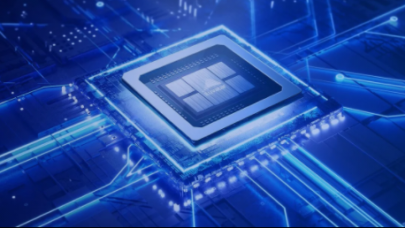
The New Velocity Bench for GPU Offload Performance Data
July 9, 2023
Performance benchmarking is the hallmark of HPC. One need to look no further than the Top500 list which has been recording HPC performance since 1993. Historica Read more…

Intel Speeds NAMD by 1.8x: Saves Xeon Processor Users Millions of Compute Hours
August 12, 2020
Potentially saving datacenters millions of CPU node hours, Intel and the University of Illinois at Urbana–Champaign (UIUC) have collaborated to develop AVX-512 optimizations for the NAMD scalable molecular dynamics code. These optimizations will be incorporated into release 2.15 with patches available for earlier versions. Read more…

What’s New in HPC Research: Volcanoes, Mobile Games, Proteins & More
July 14, 2020
In this bimonthly feature, HPCwire highlights newly published research in the high-performance computing community and related domains. From parallel programm Read more…

MLPerf Ascends as DAWNBench is Phased Out
January 31, 2020
As the MLPerf benchmark emerges as an industry standard for measuring the performance of machine learning models, its creators said they will phase out the foundational DAWNBench metric. Stanford University researchers announced earlier this month they will end rolling submissions—that is, finished sections of a model... Read more…

The Ultimate Debate – Interconnect Offloading Versus Onloading
April 12, 2016
The high performance computing market is going through a technology transition – the Co-Design transition. As has already been discussed in many articles, this transition has emerged in order to solve the performance bottlenecks of today’s infrastructures and applications, performance bottlenecks that were... Read more…

SGI UV 3000 Sets New Throughput Records
March 25, 2016
Today SGI's Gabriel Broner announced that the company's SGI UV 3000 system had set two new benchmarking records, demonstrating the machine's advanced throughpu Read more…

Is Amazon’s ‘Fast’ Interconnect Fast Enough for MPI?
April 10, 2013
Amazon's EC2 Cluster Compute instance goes head-to-head with Myrinet 10GigE cluster. Read more…

InfiniBand-Backed Cloud Provider Goes Toe-to-Toe with Amazon, Rackspace
September 13, 2012
IaaS provider ProfitBricks proclaims noteworthy performance-metrics, pits service against the top two cloud providers. Read more…

- Click Here for More Headlines

Whitepaper
Transforming Industrial and Automotive Manufacturing
In this era, expansion in digital infrastructure capacity is inevitable. Parallel to this, climate change consciousness is also rising, making sustainability a mandatory part of the organization’s functioning. As computing workloads such as AI and HPC continue to surge, so does the energy consumption, posing environmental woes. IT departments within organizations have a crucial role in combating this challenge. They can significantly drive sustainable practices by influencing newer technologies and process adoption that aid in mitigating the effects of climate change.
While buying more sustainable IT solutions is an option, partnering with IT solutions providers, such and Lenovo and Intel, who are committed to sustainability and aiding customers in executing sustainability strategies is likely to be more impactful.
Learn how Lenovo and Intel, through their partnership, are strongly positioned to address this need with their innovations driving energy efficiency and environmental stewardship.
Download Now
Sponsored by Lenovo
Whitepaper
How Direct Liquid Cooling Improves Data Center Energy Efficiency
Data centers are experiencing increasing power consumption, space constraints and cooling demands due to the unprecedented computing power required by today’s chips and servers. HVAC cooling systems consume approximately 40% of a data center’s electricity. These systems traditionally use air conditioning, air handling and fans to cool the data center facility and IT equipment, ultimately resulting in high energy consumption and high carbon emissions. Data centers are moving to direct liquid cooled (DLC) systems to improve cooling efficiency thus lowering their PUE, operating expenses (OPEX) and carbon footprint.
This paper describes how CoolIT Systems (CoolIT) meets the need for improved energy efficiency in data centers and includes case studies that show how CoolIT’s DLC solutions improve energy efficiency, increase rack density, lower OPEX, and enable sustainability programs. CoolIT is the global market and innovation leader in scalable DLC solutions for the world’s most demanding computing environments. CoolIT’s end-to-end solutions meet the rising demand in cooling and the rising demand for energy efficiency.
Download Now
Sponsored by CoolIT
Advanced Scale Career Development & Workforce Enhancement Center
Featured Advanced Scale Jobs:
HPCwire Resource Library
HPCwire Product Showcase
© 2024 HPCwire. All Rights Reserved. A Tabor Communications Publication
HPCwire is a registered trademark of Tabor Communications, Inc. Use of this site is governed by our Terms of Use and Privacy Policy.
Reproduction in whole or in part in any form or medium without express written permission of Tabor Communications, Inc. is prohibited.
























